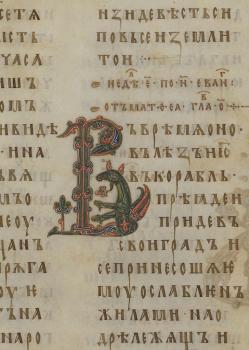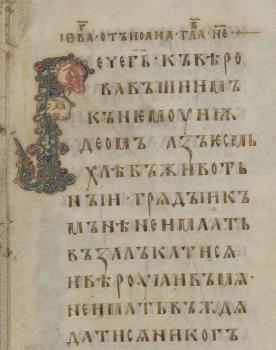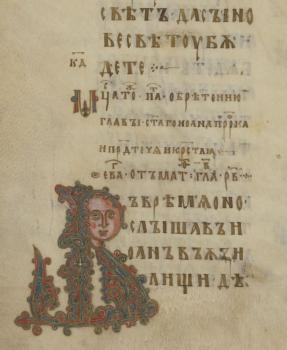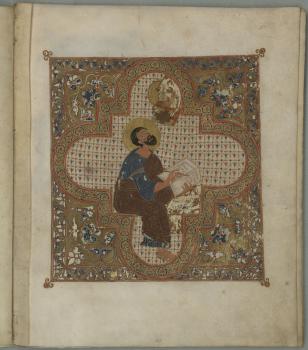Ostromir Gospels
Decoration and Script
The Ostromir Gospels is written on parchment in perfect uncial letters. Originally, unicial was used in Greek liturgical books. After the spread of Christianity in the lands of the medieval Slavs, it was developed into the Cyrillic script to transcribe Old Church Slavonic. Orthodox Slavs used the common Old Church Slavonic language in translating the Bible and for liturgy. Slavic unicial reached its perfection in the 10th century.
The manuscript is richly decorated with brilliant paints and gold, like the contemporary Byzantine manuscripts. The book is adorned with three miniature portraits of Saints John, Mark and Luke, the three writers of the Gospels. There are about twenty exquisitely ornamented headpieces and 200 capital letters. The decorative pattern never repeats itself. Unique initials of the Ostromir Gospels are composed of animal forms and human figures. Such unusual elements show an influence of the art of Western Europe.
Of a particular interest is the St. Evangelist John miniature, which has no analogue. The miniature comes on the very first page of the Ostromir Gospels. At the top, the picture depicts a lion. The symbolism of this image is many-sided. First of all, it is a symbol of Jesus Christ (in the Easter chants, the risen Christ is compared with an awakened lion). And besides, it is the traditional Byzantine Imperial symbol. The lion emphasizes the high position of the customer of the manuscript, the Novgorod governor Ostromir, and the state significance of the book itself.






